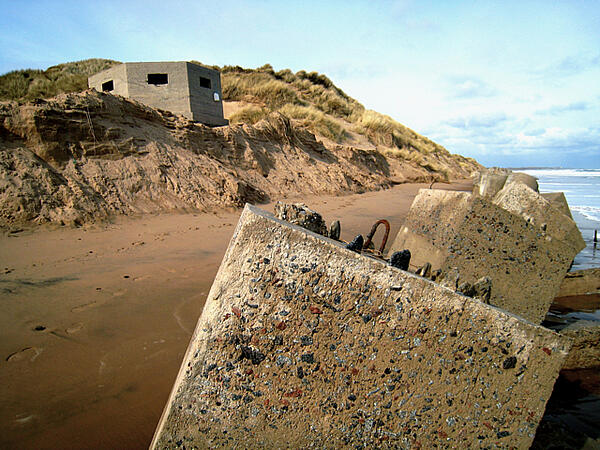Fortress Britain
Fearing a German invasion, in 1940 the British government set about creating Fortress Britain. Pillboxes were constructed across the coastline and countryside; scaffolding was erected on many beaches and anti-tank blocks were used to impede the movement of any tanks.
Nearly the whole of Britain’s coast was fortified during World War Two, but the greatest focus was in the South and South-east where an invasion would be most likely.
General 'Tiny' Ironside was the mastermind behind the UK's defence. His first move was to create a series of defences along the coastline, known as the 'Coastal Crust'. These defences used a mixture of First World War gun emplacements, pillboxes and searchlights, while the beaches were covered in barbed wire, mines and even flame traps. Ironside envisaged defences around the whole of southern and easterly England - a more ambitious project that the fortifications in France, known as the Maginot Line.

The objective was to make beaches impossible to pass through. There were several different levels of defence, with scaffolding used on the beach to prevent landing craft from landing on the beach. Mines were also planted, followed by barbed wire and yet more mines. Anti-tank blocks - huge concrete blocks - were the final level of defence.
Pill boxes were also dotted behind the beach and throughout the countryside. These could house machine guns.
Inland, and the next part of Britain's defence were 'stop lines'. Each stop line defended a specific area of land and consisted of inland pillboxes, tank traps and barbed wire. The objective of the stop boxes was not to stop an invasion, but to slow the enemy down to allow time for a central reserve of troops to be rushed in. Over 100 stop lines were built and the biggest was GHQ stop line that ran the length of Britain. Each stop line was manned by the Home Guard.
Airfields were a prime target for bombers, but they could also be used for Germans wanting to land planes. Therefore, many decoy air bases were built to fool the Germans and divert them from the real target. Colonel John Turner was responsible for designing these bases. With the help of a group of designers, Turner built 500 such decoy air bases. Some were even set on fire by the British to tempt German bombers away from their real targets. An estimated 50 per cent of German night attacks targeted decoy bases.
All the above was done to ensure that if Hitler’s 'Operation Sealion' was ever launched it would fail. As Hitler's planned for invasion never took place, Fortress Britain’s defence preparations went untested.
See also: Tiny Ironside
MLA Citation/Reference
"Fortress Britain". HistoryLearning.com. 2025. Web.
